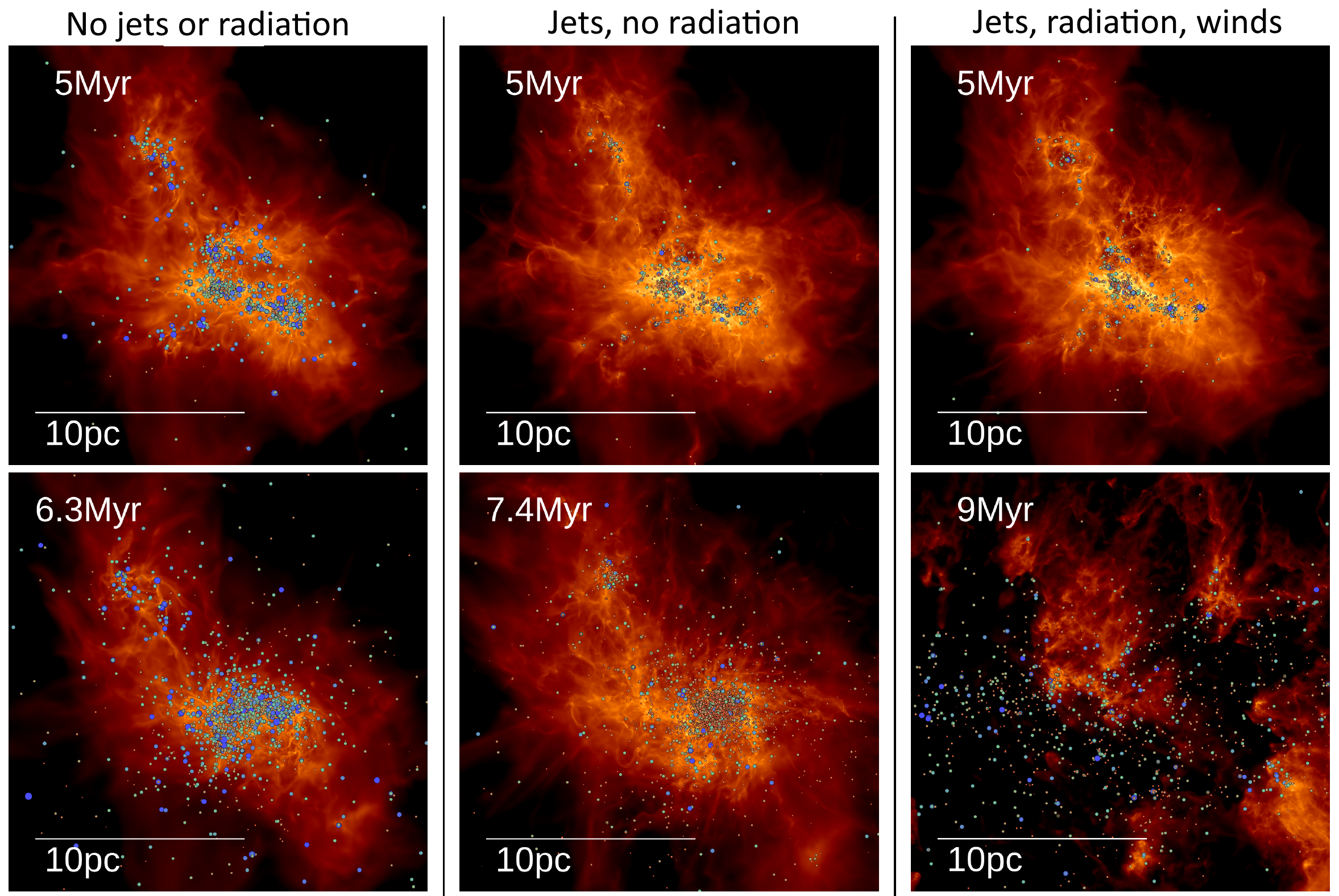
What sets the masses of stars?
One of the key mysteries of star formation is the origin of the stellar initial mass function (IMF), i.e., how common stars of different masses are. The IMF is observed to be nearly universal in the Milky Way and its satellites, regardless of age or location in the galactic disk. Significant variations are only inferred in extreme environments, such as the cores of massive elliptical galaxies and the Central Molecular Zone of the Milky Way.
In this work we present a suite of simulations from the STARFORGE project with increasigly complex physics to untangle the role turbulence, magnetic field, jets, radiation, winds and supernovae play in setting the masses of stars. We find that wadiative feedback plays a major role in quenching star formation and disrupting the cloud, in other words we need radiation for star formation to end without turning all the gas into stars. However, the most common stellar mass is predominantly set by protostellar jet physics. Meanwhile, the effect of stellar winds is minor, and supernovae occur too late to affect the IMF or quench star formation.
A key observation of the IMF is that it appears to change little in our Galaxy, even for population that formed in different environments. We ran another suite of simulations to investigate how the environment affect IMF. We find the IMF is insensitive to the initial level of turbulence, cloud mass and cloud surface density, even though these parameters significantly shape the star formation history of the cloud. The characteristic stellar mass depends weakly on metallicity and the interstellar radiation field, which essentially set the average gas temperature. Finally, while turbulent driving and the level of magnetization strongly influences the star formation history, they only influence the relative frequency of the most massive stars. Overall the masses of stars appear to be insensitive to what their birth environment is like, which could explain the observed universality of the IMF.